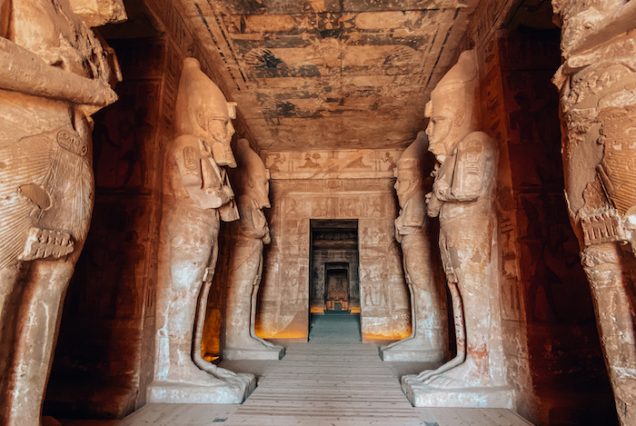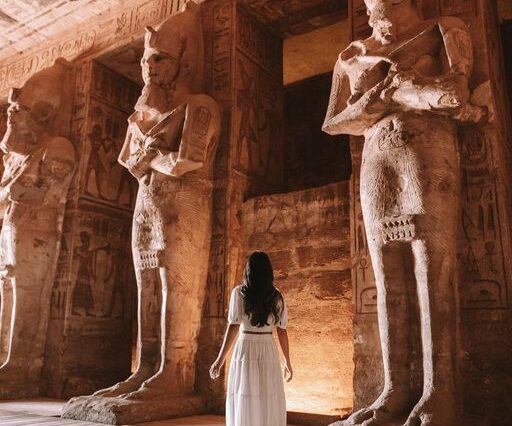Abu Simbel, located in southern Egypt on the western bank of Lake Nasser, is renowned for its magnificent temples built during the reign of Pharaoh Ramses II around 1274 BC.
These temples, dedicated to Ramses II himself and his beloved wife Nefertari, stand as iconic symbols of ancient Egyptian grandeur and religious fervor.
Historical Context
During the 19th Dynasty of Egypt’s New Kingdom, craftsmen carved the primary temple directly into a mountainside to showcase Ramses II’s might and power, immortalizing and deifying him in the eyes of both gods and people.
Architectural Marvels
- The Great Temple’s facade displays four colossal statues of Ramses II, seated and towering 20 meters high, intended to awe and intimidate visitors.
- The temples feature intricate relief carvings depicting Ramses II’s military campaigns, victories, and divine rule, showcasing advanced Egyptian craftsmanship.
Religious Significance
- The temples honored gods Ra-Horakhty, Ptah, and Amon, alongside Ramses II, emphasizing his authority and religious reverence.
- Twice yearly, on February 22nd and October 22nd, sunlight aligns to illuminate statues of Ra-Horakhty, Amon, and Ramses II inside the Great Temple, excluding Ptah, god of darkness.
UNESCO World Heritage Site
Abu SimbelThis monumental relocation effort preserved the temples and ensured their accessibility to visitors from around the world.
Visitor Experience
Today, tourists can marvel at the awe-inspiring architecture and artistry of Abu Simbel, immersing themselves in the splendor of ancient Egyptian civilization. The site continues to inspire wonder and admiration as a testament to the enduring legacy of Ramses II and the skilled artisans who created these enduring masterpieces.
as shown above
Abu Simbel’s temples of Ramses II and Nefertari stand as a testament to the grandeur, artistic achievement, and religious devotion of ancient Egypt. These monumental structures continue to captivate and inspire visitors with their colossal statues, intricate carvings, and profound historical significance.
















Reviews
There are no reviews yet.